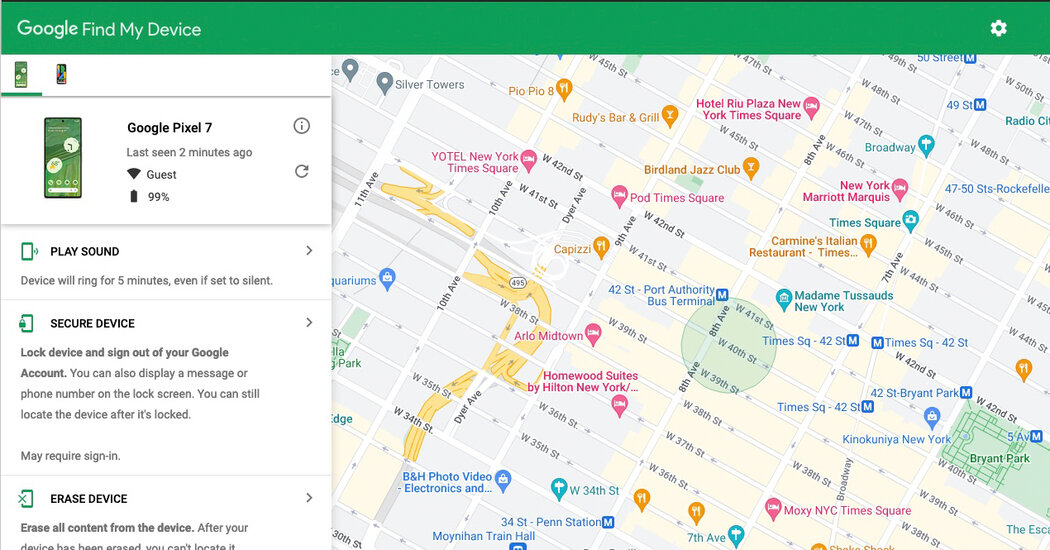Silicon Valley Bank’s Collapse Chills Start-Up Funding
Jonathan Nelson had lined up commitments for $2 million in new funding for his financial technology start-up, HF.Capital, from two investors last month. He was aiming for $2.5 million and thought securing the rest would be “perfunctory.”
Then 67 investors turned him down. In mid-March, his initial investors backed out, too.
Mr. Nelson was initially confused by the cold shoulder. But two days later, when Silicon Valley Bank, the most prominent bank for start-ups and venture capital firms, collapsed after tech investors and start-ups set off a bank run, it all made sense.
“I was scratching my head, saying, ‘Why did they just ghost?’” he said. “Then the bank run happened, and I was like, ‘Ah, they’re terrified.’”
The same realization is rippling through the start-up world in the wake of SVB’s sudden failure. After a harrowing 2022, when the easy money for start-ups dried up, leading to slashed valuations, lowered ambitions and widespread layoffs, many hoped things would bounce back this year. But SVB’s collapse has stoked even more anxiety and dread, which is beginning to manifest in start-up dealmaking throughout Silicon Valley.
Late Sunday, SVB was acquired by First Citizens BancShares. The failed bank’s former parent company, SVB Financial, filed for bankruptcy on March 17 and plans to run a separate process to sell various units.
Over the past two weeks, while regulators scrambled to find a buyer for SVB, companies that relied on it for lines of credit have scrambled to secure a new source of debt. Investors, wary of risk, have increasingly chosen to sit on the sidelines or are too busy helping to shore up existing start-ups to entertain new deals. And some young companies are doing what they can to avoid raising new funding so they do not have to face lower valuations, onerous terms and stringent due diligence.
The result is that a chilly environment for tech start-ups has rapidly gotten chillier.
“People are realizing it’s probably not going to get better,” said Mathias Schilling, an investor at the venture capital firm Headline. “It was a big shock to the system.”
He said the bank run that led to SVB’s demise showed how much fear was already in the market. Investors wouldn’t have set off such a panic if they weren’t already on edge, he said.
SVB’s collapse was not directly caused by the tech downturn, and the start-ups that banked there won’t lose their deposits since the Treasury Department and Federal Reserve eventually guaranteed all of SVB’s deposits. But the institution’s implosion followed a 61 percent drop in venture funding in the last three months of 2022 from a year earlier, according to PitchBook, which tracks start-ups.
Kyle Stanford, a PitchBook analyst, said he expected SVB’s collapse to “hasten” the market downturn that was already happening.
“We’ve been in a venture slowdown for a year now,” he said. “This is just kind of the extra problem the market didn’t need.”
In a survey of 870 founders last week by the venture capital firm NFX, 59 percent said the collapse of SVB would make an already tough fund-raising market tougher. Twenty-two percent said they were concerned that they wouldn’t be able to raise any funding this year.
Techstars, a start-up investment firm that has backed 3,500 start-ups, advised its companies to call their shareholders for more money before pitching new investors, said Maëlle Gavet, the firm’s chief executive. Techstars has also tried to reduce entrepreneurs’ expectations of how much their company is worth, urging them not to think of lowering their valuations as a failure but as a positive sign that someone is willing to invest in their company at all.
Ms. Gavet said she expected many conversations to take place this summer over whether start-ups should shut down or sell. “The whole SVB thing created a heightened sense of danger,” she said.
Bijan Salehizadeh, an investor who has stakes in a dozen venture capital funds, said that from a quarter to a third of the companies his funds had backed would run out of money in the next six months. He called this “the worst time in recent memory to raise new venture funds” and added that he had seen many investors “sitting on their hands” recently because they were nervous.
Ayham Ereksousi was planning to raise $4 million for his start-up, Stomio, which offers software to help companies test new products with their customers. But he has lowered his expectations. He had been in touch with six to eight investors who expressed interest in investing late last year. But in recent weeks, as he tried to raise money, many did not respond or said they had changed their investment strategies.
Now Mr. Ereksousi is contemplating raising less money from his existing investors and returning next year for a larger round of fund-raising. This year is likely to be a “dud,” he said, and concern over the health of banks is “dropping ice water on the entire funding ecosystem.”
If start-ups can’t raise venture funding, few other lifelines are available. Stock market volatility has rendered initial public offerings of stock virtually impossible, while big tech companies are under antitrust scrutiny and face their own financial pressures.
SVB offered many start-ups a form of credit that other banks found too risky, since the young companies are generally unprofitable. That debt, typically secured by a start-up’s venture funding, helped companies stretch their money to their next round of funding.
“It’s another capital source that’s pulling back,” Zane Carmean, a PitchBook analyst, said on a recent webinar for investors titled “Has the Music Stopped?”
Mr. Nelson, the HF.Capital founder, was previously a venture capitalist and has a portfolio of 75 investments. Before SVB’s fall, he told those companies that funding might start flowing again in the spring. Now he is recommending they wait until September to raise money. Those with an urgent need for cash may have to figure out a way to become profitable, he said.
That’s his plan for HF.Capital. Mr. Nelson wanted to use the $2.5 million to secure regulatory licenses for a software product that would enable international stock trading. But with investors on the sidelines, he now plans to “bootstrap” the company, or expand it by using profits rather than outside funding.
“It’s just a brick wall,” he said. “No one is writing checks right now.”


